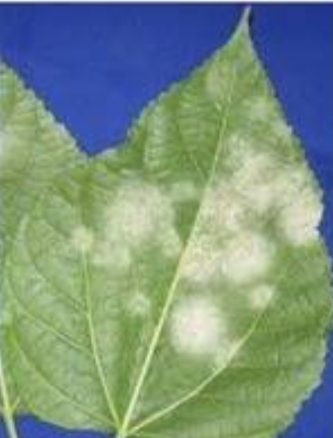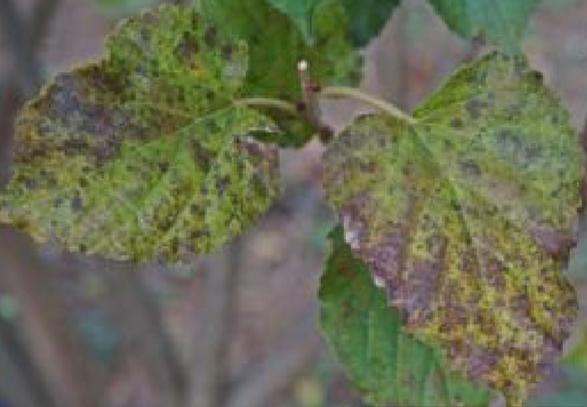Mulberry Plant
The mulberry, scientifically known as the mulberry, is a deciduous tree known for its sweet and juicy fruit. There are several species, the most common being Morus alba (white mulberry), Morus rubra (red mulberry), and Morus nigra (black mulberry). Mulberries are rich in vitamins, minerals, and antioxidants. It can be consumed fresh or dried and used in a variety of dishes such as jams, cakes, and wine. Furthermore, mulberry leaves are widely used as feed for silkworms in the silk industry.

Habit
Tree
Height
3-5 m
Growth
Fast
Soil
Well Drained, loamy
Shade
Full Sun
Moisture
Moist
Edible
Yes
Medicinal
Yes
Origin
Asia, North America
Climatic Condition
Temperate
Temperature (°)
15-25°C
Humidity (%)
60-75%
Potting media
Loamy, peat
Fertilizers
Balanced NPK (10-10-10)
Watering
Regular, moderate
Plant Weight
200-500 g
Flowering Time
Spring, Summer
Soil Ph level
5.5 - 6.5
Water Ph level
6.0 - 7.0
Soil EC
1-2 dS/m
Yield Per Plant
7 - 10 kgs/plant
NPK ratio
10:10:10
life Span
Annual
Health Benefits
Edible fruits, vitamins
Suggested Grow Media or Potting Mix ?
50% loamy soil, 30% compost, 20% sand
Suggested Fertigation/Fertilizers
Fertilize every 6 weeks with a balanced, slow-release fertilizer.
Common Diseases and Remedies
Powdery mildew, Phyllactinia.
A Whitish powdery growth is first evident on under side of leaves.
Vegetable oil.
HEALTH BENEFITS
- Rich in antioxidants like resveratrol, helping in heart health.
- Supports blood sugar control.
- Promotes healthy skin and hair.
- Strengthens the immune system.
What Is An Mulberry Tree?
The mulberry, scientifically known as the mulberry, is a deciduous tree known for its sweet and juicy fruit. There are several species, the most common being Morus alba (white mulberry), Morus rubra (red mulberry), and Morus nigra (black mulberry). Mulberries are rich in vitamins, minerals, and antioxidants. It can be consumed fresh or dried and used in a variety of dishes such as jams, cakes, and wine. Furthermore, mulberry leaves are widely used as feed for silkworms in the silk industry.

What Are The Different Types Of Mulberry?
1. White Mulberry (Morus alba)
This species is native to China and is known for its sweet, aromatic white or pale pink fruits.
2.Red Mulberry (Morus rubra):
Native to North America, the red mulberry produces dark red to purple berries that are slightly sweeter than white mulberries.
3. Black Mulberry (Morus nigra):
Native to Western Asia, this species produces large, sweet, juicy black fruits that are considered the most delicious of all mulberries.
4.Himalayan Mulberry (Morus serrata):
Native to the Himalayan region, it produces small, sweet fruits and is also prized for its wood. Cultivated primarily for ornamental purposes, this variety has pendulous branches.
5.Weeping Mulberry (Morus alba “Pendula”):
Cultivated primarily for ornamental purposes, this variety has pendulous branches.

How To Care For Mulberry?
1. Location:
Mulberry plants are native to various regions of the world, including Asia, Europe, Africa, and North America. They are common in temperate and subtropical climates. Certain species have different native ranges. For example, Morus alba (white mulberry) is native to China and is widely cultivated in Asia, Europe, and many other parts of North America. Malus rubra (red mulberry) is native to eastern North America, while nigra (black mulberry) is native to western Asia. Additionally, because of their fruit-bearing nature and ornamental value, mulberry plants are often cultivated in home gardens, orchards, and parks in areas where they are not native
2. Sunlight:
Mulberry plants usually grow in full sun. This means that they require at least 6 to 8 hours of direct sunlight per day for optimal growth and fruit production. However, it can also tolerate partial shade and may benefit from some protection from strong afternoon sun, especially in hot climates. In areas with very hot summers, afternoon shade can help prevent fruit sunburn. Overall, mulberry plants prefer full sun, but are somewhat adaptable to changing light conditions.
3. Soil:
Mulberry plants prefer well-drained, fertile soil with a slightly acidic to neutral pH in the range of approximately 6.0 to 7.0. It tolerates many different soil types, including loamy, sandy, and clay soils, as long as they are well-drained. Adding organic matter, such as compost, to heavy clay soils improves drainage and soil structure. Additionally, mulberry plants benefit from soil that retains moisture without causing waterlogging. Adding a layer of mulch around the base of your plants will help retain moisture and suppress weeds. Overall, providing fertile, well-drained soil is essential for healthy mulberry growth and fruit production.
4. Hydration:
Mulberry plants require regular watering, especially during the active growing season in spring and summer. Newly planted mulberry trees require constant moisture to establish their root system. In general, it is recommended to water deeply and infrequently and wait until the soil is slightly dry between waterings to avoid waterlogging and root rot. Once established, mature mulberry trees are reasonably drought tolerant, but require regular watering during dry periods, especially during fruiting.

5. Nourishment:
Mulberry plants benefit from regular fertilization to support healthy growth and fruit production. A balanced, slow-release fertilizer with a formula such as 10-10-10 or 20-20-20 can be applied in the spring as soon as new growth begins. Follow the manufacturer's recommendations for fertilizer amounts, as excessive fertilization can cause nutritional imbalances and plant stress. You can also spread organic matter, such as compost or well-rotted manure, as mulch around the base of your plants to provide nutrients and improve soil structure. Mulching also helps retain moisture and suppress weeds.
6. Issues:
The most common pests that affect mulberry plants include aphids, scale insects, and caterpillars. By regularly checking leaves and branches, you can detect pest infestations early. If necessary, you can use natural enemies, insecticidal soap, or horticultural oil to control pests. Mulberry trees may be susceptible to diseases such as powdery mildew, spot disease, and root rot. Proper hygiene, good air circulation, and avoiding overhead watering can help prevent these diseases. A fungicide may be required for severe disease. Ripe mulberries attract birds, which can damage the fruit. You can protect your fruit from birds by installing netting or other bird screens.
What Are The Benefits Of Mulberry?
Nutritious Berry: Mulberries are rich in vitamins, minerals, and antioxidants such as vitamin C, vitamin K, iron, potassium, and fiber. Consuming mulberries can support your overall health and well-being. Delicious Fruit: Mulberries have a sweet and juicy taste that makes them a delicious addition to a variety of dishes, including jams, cakes, smoothies, and desserts. Silk production: Mulberry cultivation is essential for silk production as mulberry leaves are the main food source for silkworms. The silk industry relies heavily on mulberry trees as a food crop for silkworms. Ornamental Value: Mulberry trees have attractive foliage and can be grown in gardens, parks, and landscapes for their ornamental value. Erosion Control: Mulberry trees have deep root systems that help stabilize soil and prevent erosion, making them beneficial for soil conservation efforts. Wildlife Habitat: Mulberry trees provide habitat and food for a variety of wildlife species, including birds and small mammals, contributing to the biodiversity of the ecosystem.
FAQs About Growing Mulberry
1.How are mulberries typically used in cooking?
Mulberries can be eaten fresh, directly from the tree. It has a sweet and juicy flavor similar to blackberries and raspberries. Mulberries can be used to make delicious jams, jellies and preserves. Mulberries can be used as a topping for desserts such as ice cream, yogurt, and cheesecake.
2.What are the nutritional benefits of eating mulberries?
Mulberries are rich in vitamin C, which supports the immune system and helps the body absorb iron. It also contains vitamin K, which is important for blood clotting and bone health. Mulberries are an excellent source of fiber and can help maintain a healthy weight by promoting digestive health, regulating blood sugar levels, and promoting satiety
3. When do mulberries usually bear fruit?
Mulberry plants usually bear fruit in late spring to early summer, depending on the variety and growing conditions. In warm climates, fruiting usually occurs from late May to early July. The exact time may vary depending on factors such as local climate, weather conditions, and the age of the plant. Generally, mulberry fruit begins to develop after flowers bloom, and ripe fruit is ready for harvest after several weeks to months.
4. Can mulberries be grown in containers?
Yes, mulberry plants, especially dwarf and patio varieties, can be grown in containers. Choose a large container with enough drainage holes for the mulberry's root system to grow. For dwarf varieties, containers with a diameter of at least 60 cm are recommended.
5. When is the best time to prune mulberry trees?
The best time to prune a mulberry tree is late winter or early spring, when the tree is still dormant before new growth begins. Pruning at this time will help the tree recover faster and reduce the risk of disease transmission. Additionally, pruning in late winter or early spring allows you to better assess the tree's overall structure and remove dead, damaged, and crossing branches.




